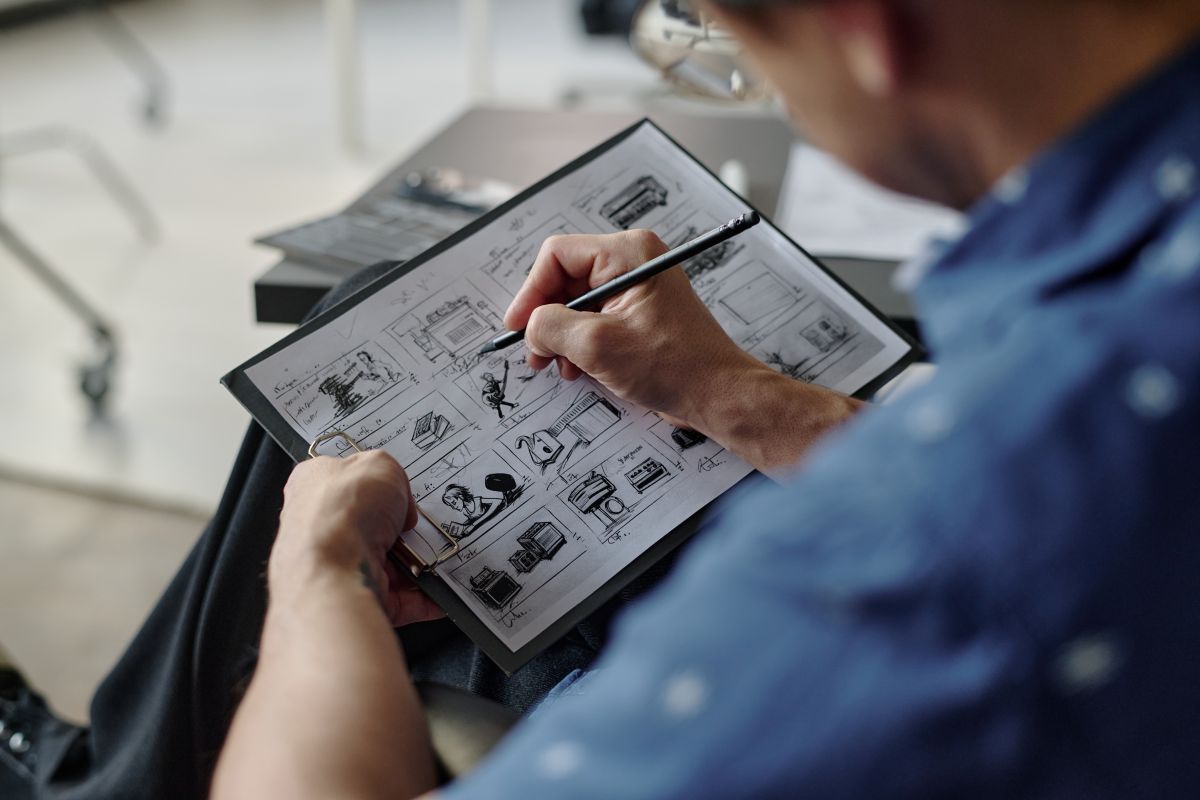
Animation Studios in South Africa: Cel Animation
Cel animation is one of the oldest forms of animation, but it is still as relevant today as ever. While the industry has shifted to more modern techniques, cel animation laid the foundation for much of what we see in animation today. But what exactly is cel animation, and how has it evolved over time? Let us take a closer look at this important technique, its history, and its continuing impact on animation, including the work of animation studios in South Africa.
What Is Cel Animation?
Cel animation, short for celluloid animation, is the process of creating animated sequences by hand-drawing each frame on transparent sheets of celluloid. These sheets are then layered on top of painted backgrounds and photographed one by one. The process allows animators to reuse the backgrounds for multiple frames, which significantly reduces the amount of work required for creating animations.
This technique involves several stages:
- Drawing: Each character or element of the scene is drawn by hand on paper.
- Inking: The drawings are transferred to clear celluloid sheets, where they are outlined in black ink.
- Painting: The inked drawings are painted on the reverse side of the celluloid sheets with bright, vibrant colours.
- Filming: The painted cels are placed over a static background and filmed frame by frame to create movement.
While it sounds simple, this process requires great attention to detail and a significant amount of time and labour. Early animation studios, including those in South Africa, relied on this method for decades, creating some of the most iconic works of animation history.
Origins and Invention of Cel Animation
Cel animation had its beginnings in the early 20th century, thanks to the work of Earl Hurd and John Bray, who patented the process in 1915. Before this, animation was created by drawing each individual frame on paper, making the process tedious and incredibly time-consuming.
The introduction of the transparent celluloid sheet allowed for the reuse of backgrounds, which made the production process far more efficient. This innovation changed the industry, allowing animation studios to produce higher-quality content more quickly. For example, Disney’s early works like Snow White and the Seven Dwarfs (1937) were possible because of this technique, which made it feasible to create full-length animated films.
As the process evolved, so did the equipment and technology that supported it. While the basic principles remained the same, tools like the xerox machine (which helped speed up the inking process) made the work easier for animators. Even as the animation industry turned toward digital methods, the influence of cel animation remains ever-present, especially in the work done by animation studios in South Africa, where a blend of traditional and modern techniques continues to thrive.
Iconic Examples of Cel Animation
Over the years, cel animation produced some of the most beloved films and shows, many of which are still cherished today. Some of the most famous works created using this method include:
- Snow White and the Seven Dwarfs (1937): The first full-length animated feature film, Snow White, used cel animation to bring the characters and the magical world to life. This groundbreaking work set the standard for all animated films to follow.
- The Lion King (1994): A film that has become a cultural touchstone, The Lion King used traditional cel animation for its beautiful hand-drawn scenes. It demonstrated how this technique could still be used in modern storytelling.
- Looney Tunes and Tom and Jerry: These classic animated shorts, filled with zany antics, were produced using cel animation. They helped to establish animation as an art form that could entertain people of all ages.
- Beauty and the Beast (1991): Another Disney masterpiece, Beauty and the Beast, used cel animation for its visually stunning sequences and intricate character designs.It showcased the precision and skill that animators applied in creating animated worlds.
These examples, among many others, show just how essential cel animation was in the development of the animated film industry. Even though animation studios in South Africa and elsewhere now mostly focus on digital techniques, the legacy of cel animation can still be seen in the art and storytelling of today’s animated projects.
The Decline of Cel Animation
While cel animation was a revolutionary technique, the rise of computer-generated imagery (CGI) in the 1990s changed the animation industry forever. Films like Toy Story (1995) and Shrek (2001) ushered in the age of 3D animation, which quickly proved to be more cost-effective and less time-consuming than traditional cel animation.
The shift to digital animation allowed for more flexibility and ease of production. With 3D animation, animators no longer had to painstakingly hand-draw and paint each frame. Instead, they could create entire characters and environments digitally, making it easier to create complex animations and special effects.
However, the transition did not mean the complete end of cel animation. It is still used occasionally for special projects, especially when a specific artistic style or nostalgic aesthetic is desired. For example, animation studios in South Africa have maintained a strong tradition of combining digital techniques with hand-drawn styles to create hybrid works, offering the best of both worlds.
Is Cel Animation Still Used?
Although digital animation has taken over the industry, cel animation is not entirely gone. Many animators continue to use it for certain projects, particularly when they want to evoke a classic feel or pay homage to traditional methods. Studios like Studio Ghibli in Japan have famously used cel animation for films like The Wind Rises (2013), demonstrating that the technique still has a place in the modern animation landscape.
Modernised Versions of Cel Animation
While the days of traditional hand-drawn cel animation may be over, the spirit of the technique is still alive in modern animation. Advances in digital tools have allowed animators to replicate the look and feel of cel animation without the same labour-intensive process. Programmes like Adobe Animate, Toon Boom, and TVPaint have made it easier than ever to create 2D animations that capture the essence of hand-drawn work.
The rise of hybrid animation styles, where 3D animation is combined with hand-drawn elements, has also given new life to cel animation. Films like The Boxtrolls (2014) and Klaus (2019) blend traditional 2D animation with modern 3D techniques to create unique visuals that feel both contemporary and nostalgic.
Animation studios in South Africa have embraced these new techniques, often blending digital and traditional methods to achieve stunning results. This combination allows them to offer the same warmth and charm that traditional cel animation brings, with the flexibility and efficiency that digital tools provide.
Challenges and Criticisms
Despite its lasting influence, cel animation has not been without its challenges. The technique is labour-intensive, requiring a great deal of time and effort from animators. In addition, creating animations frame by frame on celluloid sheets can be a costly process, making it less appealing for large-scale commercial projects.
Another issue is the environmental impact. Cel animation requires materials like paints, inks, and chemicals, which can be harmful to the environment if not disposed of properly. As the animation industry has become more eco-conscious, many studios have shifted to more sustainable production methods, which has contributed to the decline of traditional cel animation.
However, despite these challenges, the appeal of cel animation remains. Animation studios in South Africa, for example, continue to find ways to incorporate this technique into their work while mitigating some of the environmental and financial drawbacks. This ensures that cel animation remains a vital part of the animation world.
The future of cel animation is one that celebrates the artistry of the past while embracing the advancements of the present. Whether through 2D digital techniques, 3D hybrids, or even fully hand-drawn sequences, this classic animation method will continue to inspire and influence the animation industry for years to come.
Conclusion
Cel animation may not dominate the industry like it once did, but its legacy endures. From its humble beginnings in the early 1900s to its influence on modern animation techniques, cel animation has shaped the way we experience animated content. Animation studios in South Africa and around the world continue to find ways to incorporate this timeless art form into their work, ensuring that its beauty and craftsmanship are never forgotten. Cel animation reminds us that while technology evolves, the artistry of animation will always have a place in the world.
Animation’s come a long way, but there’s still something special about the classics. If you’re ready to explore how animation can transform your next project, Sound Idea Digital is here to help. Contact us today and let’s discuss your next project.
We are a full-service Web Development and Content Production Agency in Gauteng specialising in Video Production, Animation, eLearning Content Development, Learning Management Systems, and Content Production.
Contact us for a quote. | enquiries@soundidea.co.za | https://www.soundideavideoproduction.co.za| +27 82 491 5824 |

